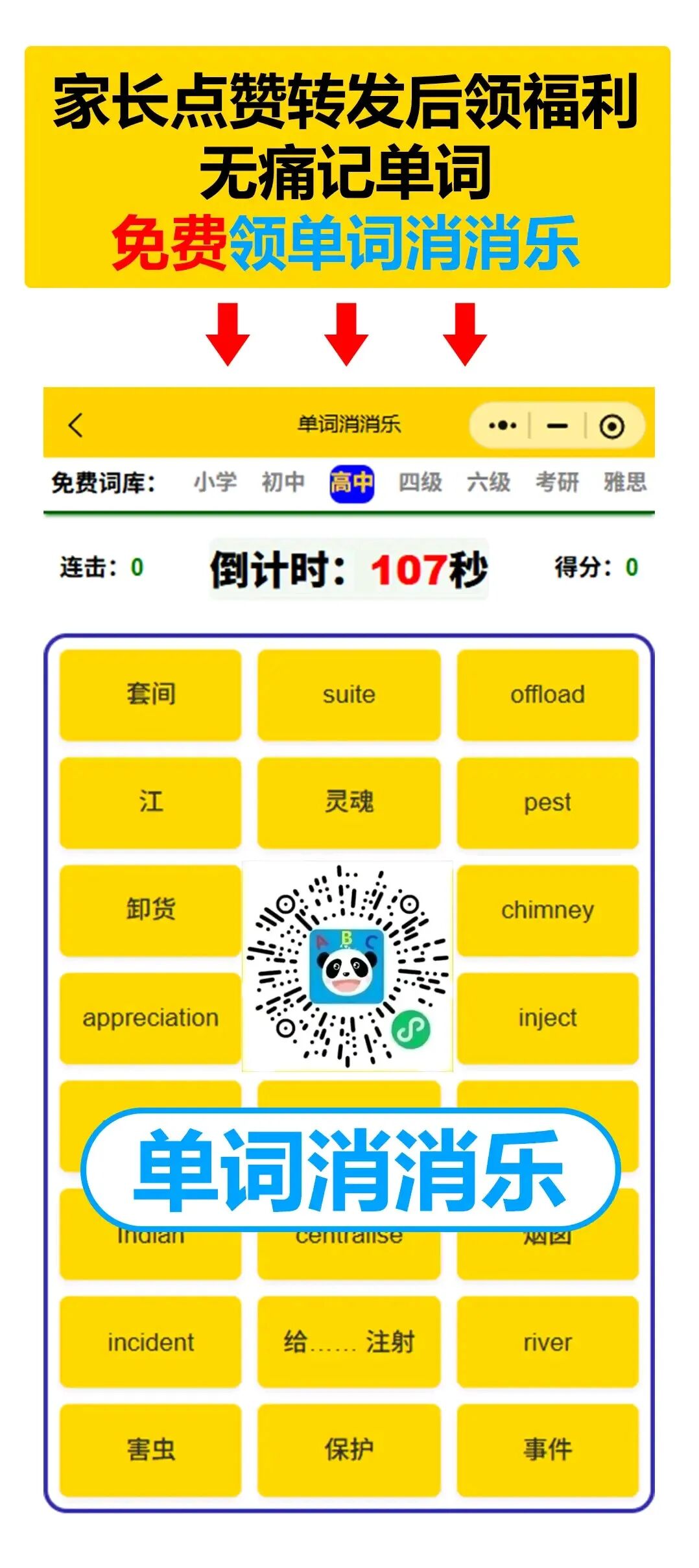-

评论
-

收藏
-

点赞

初中英语语法专项:介词(考点精讲+30道真题例析+深度解析)
阅读量:1529 2025.10.15
奇速英语AI伴学初中英语语法专项:介词(考点精讲+30道真题例析+深度解析)
介词是初中英语中连接“名词/代词与句子其他成分”的关键纽带,核心功能是明确时间、地点、方式、逻辑关系及固定搭配,是中考语法的高频考点(占语法题20%-25%)。其考查形式多结合语境,需重点区分“易混介词用法”和“固定搭配场景”,以下从考点拆解、30道真题例析、深度解析三部分,帮你彻底掌握介词用法。
 一、介词核心考点精讲(聚焦中考高频)
一、介词核心考点精讲(聚焦中考高频)
介词的中考考点可归纳为“四大类+一关键”,每类均对应具体辨析维度,是解题的核心依据:
(一)表时间的介词(中考占比35%)
核心考查“时间范围与搭配场景”,高频易混介词为in/on/at/for/since/from,需按“时间维度”精准区分:
1. in:用于“大范围时间”,包括年、月、季节、泛指的上午/下午/晚上(无具体修饰),如in 2025(年)、in September(月)、in winter(季节)、in the afternoon(泛指下午)。
2. on:用于“具体时间”,包括具体日期、星期、有修饰词的上午/下午/晚上(如天气、节日),如on October 15th(日期)、on Sunday(星期)、on a snowy morning(有天气修饰的上午)、on Christmas Eve(节日)。
3. at:用于“精确时间点”或固定时间搭配,如at 8:30 AM(时刻)、at noon(正午)、at night(夜晚)、at the age of 13(年龄点)。
4. for:用于“持续时间段”,强调动作延续的时长,后接“数词+时间单位”,如for three days(持续3天)、for two hours(持续2小时),可搭配任意时态。
5. since:用于“时间起点”,强调“从过去某点到现在”,后接具体时间点(如年份、日期、从句),常与现在完成时(have/has done)连用,如since 2020(从2020年起)、since last Monday(从上周一起)、since he came here(自从他来这儿起)。
6. from:用于“时间起点”,常与“to”搭配(from...to...),表“从……到……”,如from 9 AM to 5 PM(从上午9点到下午5点),不强调与现在的关联。
核心考查“空间位置与移动方式”,高频易混介词为in/on/to/across/through/over/past/at,需按“空间逻辑”区分:
1. in/on/to:表“范围关系”
- in:在某空间“内部”,如in the classroom(在教室里面)、in China(在中国境内);
- on:在某物体“表面”(有接触),如on the desk(在桌子上)、on the wall(在墙上,贴附表面);
- to:在某范围“外部且不接壤”,如Japan is to the east of China(日本在中国东边,不接壤)。
2. across/through/over:表“移动方式(穿过/越过)”
- across:从物体“表面穿过”(平面移动),如walk across the street(过马路,从路面表面过)、swim across the river(游过河,从水面过);
- through:从物体“内部穿过”(空间穿透),如go through the forest(穿过森林,从树林内部过)、walk through the door(穿过门,从门内空间过);
- over:从物体“上方越过”(不接触,有高度差),如jump over the fence(跳过栅栏,从上方越过)、fly over the city(飞过城市,从上空过)。
3. past:表“从旁边经过”,强调“不进入、不穿过”,如walk past the shop(从商店旁边走过)、drive past the school(开车经过学校)。
4. at:表“具体小地点”,如at the bus stop(在公交站)、at the door(在门口)、at the station(在车站)。
(三)表逻辑关系的介词(中考占比20%)
核心考查“原因、方式、伴随”,高频介词为because of/for/by/with/in/without:
1. 表原因:because of vs for
- because of:后接“名词/代词/动名词”,表“直接原因”,如stay home because of the rain(因为下雨待在家,rain是名词)、fail the exam because of being lazy(因为懒惰考试不及格,being lazy是动名词);
- for:后接“名词/代词”,表“间接原因或目的”,如thank you for your help(感谢你的帮助,表目的)、He left for work(他去上班了,表目的)。
2. 表方式:by/with/in
- by:后接“交通工具/手段(无冠词)”,表“通过某种方式”,如go to school by bike(骑自行车上学)、learn English by listening to songs(通过听歌学英语);
- with:后接“工具/身体部位”,表“用……(工具)做”,如write with a pen(用钢笔写字)、catch the ball with hands(用手接球);
- in:后接“语言/材料/颜色”,表“用……(语言/材料)”,如speak in English(用英语说)、write in red(用红色写)、a dress in cotton(棉质连衣裙)。
3. 表伴随:with vs without
- with:表“带有、伴随”,如a girl with long hair(长头发的女孩)、sleep with the light on(开着灯睡觉);
- without:表“没有、无”,如go out without a bag(没带包出门)、finish homework without help(没靠帮助完成作业)。.png) (四)固定搭配中的介词(中考占比15%)
(四)固定搭配中的介词(中考占比15%)
介词固定搭配无规律,需“按类别记忆”,中考高频搭配分为三类:
1. 动词+介词:listen to(听)、look for(寻找)、wait for(等待)、depend on(依靠)、agree with(同意)、look after(照顾)、talk about(谈论)、think of(认为);
2. 名词+介词:the answer to(……的答案)、the key to(……的钥匙/关键)、a photo of(……的照片)、interest in(对……的兴趣)、advice on(关于……的建议)、problem with(……的问题);
3. 形容词+介词:good at(擅长)、interested in(对……感兴趣)、afraid of(害怕)、angry with(对……生气)、different from(与……不同)、famous for(因……著名)、ready for(为……准备好)。
(五)解题关键:“语境定位法”
中考介词题90%以上需结合语境判断,解题时先明确“题干核心场景”(是时间、地点、原因还是搭配),再对应考点排除错误选项,如:
- 若题干出现“年份/月份/季节”,优先选in;
- 若出现“具体日期/星期”,优先选on;
- 若出现“现在完成时+时间点”,优先选since;
- 若出现“动词/名词/形容词”,优先核对固定搭配。
二、30道中考介词真题例析(2025-2023年各省市真题)
以下真题涵盖所有高频考点,按“表时间、表地点、表逻辑、固定搭配”分类,便于针对性练习:
(一)表时间的介词(10题)
1.(2025·北京卷)We will hold a sports meeting ______ September this year.
A. in B. on C. at D. for
2.(2025·上海卷)My grandparents have lived in this village ______ 1980.
A. for B. since C. from D. at
3.(2024·广东卷)—What time do you usually get up?
—I usually get up ______ 6:30 AM.
A. in B. on C. at D. for
4.(2024·江苏卷)They are going to have a picnic ______ Sunday morning.
A. in B. on C. at D. since
5.(2024·浙江卷)He has been studying English ______ two hours.
A. for B. since C. on D. at
6.(2023·山东卷)We usually have a holiday ______ the Spring Festival.
A. in B. on C. at D. for
7.(2023·湖北卷)The party will start ______ 7:00 PM and end ______ 9:00 PM.
A. at; at B. in; in C. on; on D. for; for
8.(2023·湖南卷)She has worked as a teacher ______ she graduated from college.
A. for B. since C. from D. at
9.(2025·四川卷)We often go swimming ______ summer.
A. in B. on C. at D. since
10.(2025·福建卷)The movie will be on ______ the evening of October 1st.
A. in B. on C. at D. for
(二)表地点的介词(10题)
11.(2025·天津卷)The bookstore is ______ the left of the bank. You can find it easily.
A. in B. on C. at D. to
12.(2025·重庆卷)Guangzhou is ______ the south of China.
A. in B. on C. to D. at
13.(2024·安徽卷)The cat jumped ______ the wall and ran away.
A. across B. through C. over D. past
14.(2024·江西卷)We walked ______ the park and saw many beautiful flowers.
A. across B. through C. over D. past
15.(2024·陕西卷)My home is ______ the neighborhood, so I walk to school every day.
A. in B. on C. to D. at
16.(2023·辽宁卷)He drove ______ the supermarket and stopped to buy some milk.
A. across B. through C. over D. past
17.(2023·吉林卷)The post office is ______ the corner of the street.
A. in B. on C. at D. to
18.(2023·黑龙江卷)We swam ______ the river and reached the other side.
A. across B. through C. over D. past
19.(2025·云南卷)Shanghai is ______ the east of Jiangsu Province.
A. in B. on C. to D. at
20.(2025·贵州卷)She walked ______ the door and entered the room.
A. across B. through C. over D. past
(三)表逻辑关系的介词(5题)
21.(2025·北京卷)He didn’t go to school ______ his illness.
A. because B. because of C. for D. since
22.(2024·上海卷)We usually communicate with each other ______ English.
A. by B. with C. in D. on
23.(2024·广东卷)She writes letters ______ a pen.
A. by B. with C. in D. at
24.(2023·浙江卷)They went to the park ______ bike, not by car.
A. by B. with C. in D. on
25.(2023·江苏卷)He finished the work ______ any help. He is really clever.
A. with B. without C. for D. by
(四)固定搭配中的介词(5题)
26.(2025·山东卷)Could you tell me the answer ______ this question?
A. to B. of C. in D. on
27.(2025·湖北卷)She is good ______ playing the piano. She won many prizes.
A. at B. in C. on D. for
28.(2024·湖南卷)We are talking ______ the new movie. Have you seen it?
A. to B. about C. with D. for
29.(2024·四川卷)He is interested ______ science. He wants to be a scientist.
A. in B. at C. on D. for
30.(2023·福建卷)Thank you ______ your help. I finished the work on time.
A. to B. for C. with D. about
三、30道真题深度解析(逐题拆解考点+易错点提醒)
(一)表时间的介词(1-10题)
1. 答案:A
- 考点:表时间的介词in的用法(用于月份)。
- 解析:题干中“September”(九月)是月份,属于“大范围时间”,需用in;on用于具体日期,at用于时刻,for用于时间段,均不符合,故选A。
- 易错点提醒:学生易误选on,需牢记“月份前用in,具体日期前用on”,如in September(九月)vs on September 1st(九月一日)。
2. 答案:B
- 考点:表时间的介词since的用法(与现在完成时搭配)。
- 解析:题干中“have lived”是现在完成时,“1980”是具体时间点,需用since(从1980年起,持续到现在);for后接时间段,from需与to搭配,at用于时刻,故选B。
- 易错点提醒:学生易混淆since和for,记住“since+时间点,for+时间段”,且since常与现在完成时连用,for可搭配任意时态(如He stayed here for 3 days. 一般过去时)。
3. 答案:C
- 考点:表时间的介词at的用法(用于时刻)。
- 解析:题干中“6:30 AM”是具体时刻,需用at;in用于月份/季节,on用于日期/星期,for用于时间段,故选C。
- 易错点提醒:注意“at noon(正午)、at night(夜晚)”是固定搭配,不能用in或on。
4. 答案:B
- 考点:表时间的介词on的用法(用于有修饰的上午/下午)。
- 解析:题干中“Sunday morning”(周日上午)是“有星期修饰的上午”,属于“具体时间”,需用on;in用于泛指上午(如in the morning),at用于时刻,since用于时间起点,故选B。
- 易错点提醒:区分“in the morning(泛指,无修饰)”和“on a rainy morning(有修饰,具体)”,后者必须用on。
5. 答案:A
- 考点:表时间的介词for的用法(用于时间段)。
- 解析:题干中“two hours”(两小时)是时间段,需用for;since后接时间点,on用于日期,at用于时刻,故选A。
- 易错点提醒:for可搭配任意时态,如He will stay here for 5 days.(一般将来时)、He stayed here for 5 days.(一般过去时),不局限于完成时。
6. 答案:C
- 考点:表时间的介词at的用法(用于节日)。
- 解析:“the Spring Festival”(春节)是传统节日,常用“at+节日”(如at Christmas,at Mid-Autumn Festival);in用于月份,on用于具体节日当天(如on Christmas Day),for用于时间段,故选C。
- 易错点提醒:注意“节日”与“节日当天”的区别,如“at the Spring Festival(春节期间)”vs“on Spring Festival Eve(除夕当天,具体日期)”。
(一)表时间的介词(1-10题)
7. 答案:A
- 考点:表时间的介词at的用法(用于时刻)。
- 解析:题干中“7:00 PM”和“9:00 PM”均是具体时刻,需用at;in用于月份/季节,on用于日期/星期,for用于时间段,故选A。
- 易错点提醒:若题干是“from 7 PM to 9 PM”,则用“from...to...”表时间范围,但本题强调“开始和结束的具体时刻”,需单独用at搭配,避免混淆“时刻介词”与“范围介词”。
8. 答案:B
- 考点:表时间的介词since的用法(与现在完成时+从句搭配)。
- 解析:题干中“has worked”是现在完成时,“she graduated from college”(她大学毕业)是过去时间点的从句,需用since(自从……起);for后接时间段,from需与to搭配,at用于时刻,故选B。
- 易错点提醒:since后接从句时,从句需用一般过去时(如graduated),主句用现在完成时,这是中考高频时态搭配,需牢记“since+过去时从句,主句+现在完成时”。
9. 答案:A
- 考点:表时间的介词in的用法(用于季节)。
- 解析:题干中“summer”(夏天)是季节,属于“大范围时间”,需用in;on用于具体日期,at用于时刻,since用于时间起点,故选A。
- 易错点提醒:四季(spring/summer/autumn/winter)前均用in,无需加冠词,如“in autumn”(不能说“in the autumn”,特指某一年的季节除外,如“in the summer of 2023”)。
10. 答案:B
- 考点:表时间的介词on的用法(用于具体日期的晚上)。
- 解析:题干中“the evening of October 1st”(10月1日晚上)是“有具体日期修饰的晚上”,属于“具体时间”,需用on;in用于泛指晚上(如in the evening),at用于时刻,for用于时间段,故选B。
- 易错点提醒:区分“in the evening”(无修饰,泛指)和“on the evening of+日期”(有日期修饰,具体),后者必须用on,这是中考易错题,需重点关注。
(二)表地点的介词(11-20题)
11. 答案:B
- 考点:表地点的介词on的用法(固定搭配on the left/right)。
- 解析:“on the left/right”是固定短语,表“在左边/右边”,无其他介词可替换;in表“内部”,at表“小地点”,to表“外部不接壤”,均不符合,故选B。
- 易错点提醒:学生易误选in,需牢记“左右方位用on”,如“on my left”(在我左边)、“on the right of the building”(在大楼右边)。
12. 答案:A
- 考点:表地点的介词in的用法(在某国家/地区内部)。
- 解析:广州是中国境内的城市,表“在某范围内部”需用in;on表“接壤外部”(如Hunan is on the south of Hubei),to表“不接壤外部”,at表“小地点”,故选A。
- 易错点提醒:区分“in/on/to”表范围的用法:①A在B内部→A is in the...of B;②A与B接壤→A is on the...of B;③A与B不接壤→A is to the...of B,需结合地理常识判断。
13. 答案:C
- 考点:表地点的介词over的用法(从上方越过)。
- 解析:猫跳“过”墙,是从墙的“上方越过”(不接触墙面,有高度差),需用over;across表“表面穿过”(如过马路),through表“内部穿过”(如穿森林),past表“从旁边经过”,均不符合,故选C。
- 易错点提醒:学生易混淆over和across,记住“over是‘越过’(向上+向前),across是‘穿过’(平面向前)”,如“jump over the desk”(跳过桌子)vs“walk across the floor”(走过地板)。
14. 答案:B
- 考点:表地点的介词through的用法(从内部穿过)。
- 解析:“walk...the park”(穿过公园)是从公园“内部空间穿过”(经过树木、道路等内部区域),需用through;across表“表面穿过”(如穿过公园的广场,平面),over表“上方越过”,past表“从旁边经过”,故选B。
- 易错点提醒:判断用through还是across,关键看“是否进入物体内部”——穿过“空间/立体区域”(如森林、公园、隧道)用through,穿过“平面/表面”(如街道、广场、操场)用across。
15. 答案:A
- 考点:表地点的介词in的用法(在某区域内部)。
- 解析:“the neighborhood”(街区、社区)是范围性区域,表“在社区内部”需用in;on表“表面”,to表“外部”,at表“具体小地点”(如at the neighborhood park),故选A。
- 易错点提醒:“in the neighborhood”是固定搭配,表“在附近(社区范围内)”,不能说“at the neighborhood”,需注意“区域名词”与“小地点名词”的介词区别。
16. 答案:D
- 考点:表地点的介词past的用法(从旁边经过)。
- 解析:“drove...the supermarket”(开车经过超市)是“从超市旁边路过,不进入内部”,需用past;across表“表面穿过”,through表“内部穿过”,over表“上方越过”,均不符合,故选D。
- 易错点提醒:past强调“无接触、不进入”,仅“从旁边经过”,如“walk past the door”(从门口走过,不进门)、“run past the tree”(从树旁跑过,不靠近),与through(进入内部)形成明显区别。
17. 答案:C
- 考点:表地点的介词at的用法(用于具体小地点)。
- 解析:“the corner of the street”(街角)是具体的小地点(点性位置),需用at;in表“内部”,on表“表面”,to表“外部”,均不符合,故选C。
- 易错点提醒:区分“at the corner”(在街角,点性位置)和“on the corner of the table”(在桌角,表面位置),前者是“地点点”用at,后者是“物体表面的角”用on。
18. 答案:A
- 考点:表地点的介词across的用法(从表面穿过)。
- 解析:“swam...the river”(游过河)是从河的“水面表面穿过”(平面移动,从河的一边到另一边,不进入水下内部),需用across;through表“内部穿过”(如穿过河水内部,不符合实际),over表“上方越过”,past表“从旁边经过”,故选A。
- 易错点提醒:游泳过“河/湖”均用across,因是“在水面表面移动”;若说“潜水穿过河水”,则用through(进入内部),但中考中多考查“表面穿过”的常规场景,需优先选across。
19. 答案:C
- 考点:表地点的介词to的用法(在某范围外部且不接壤)。
- 解析:上海位于江苏省的东边,且上海与江苏不直接接壤(中间隔其他区域),表“外部不接壤”需用to;in表“内部”,on表“接壤外部”,at表“小地点”,故选C。
- 易错点提醒:需结合地理常识判断“接壤与否”——如“Zhejiang is on the south of Jiangsu”(浙江与江苏接壤,用on),而上海与江苏不接壤,需用to,这是中考对“in/on/to”的进阶考查,需积累常见省份/城市的位置关系。
20. 答案:B
- 考点:表地点的介词through的用法(从内部穿过)。
- 解析:“walked...the door”(穿过门)是从门的“内部空间穿过”(从门外进入门内,经过门的框架内部),需用through;across表“表面穿过”(如穿过门板表面,不符合实际),over表“上方越过”,past表“从旁边经过”,故选B。
- 易错点提醒:“穿过门/窗户/隧道”均用through,因是“进入并穿过物体的内部空间”,而“穿过门的表面(如擦门)”才用across,中考中多考查“进入内部”的场景,需优先选through。 (三)表逻辑关系的介词(21-25题)
(三)表逻辑关系的介词(21-25题)
21. 答案:B
- 考点:表原因的介词because of的用法(后接名词/代词)。
- 解析:题干中“his illness”(他的疾病)是名词短语,表“直接原因”需用because of;because后接句子(如because he was ill),for表“间接原因/目的”,since后接句子(表已知原因),故选B。
- 易错点提醒:学生易混淆because和because of,核心区别是“because+句子,because of+名词/短语”,如“because it rained”(句子)vs“because of the rain”(名词短语),这是中考高频易错点,需严格区分。
22. 答案:C
- 考点:表方式的介词in的用法(后接语言)。
- 解析:“用某种语言交流”需用“in+语言”,如“in English”(用英语)、“in Chinese”(用中文);by表“交通工具/手段”,with表“工具”,on表“在……上”,均不符合,故选C。
- 易错点提醒:区分“in/with/by”表方式的用法:①用语言/材料→in;②用工具/身体部位→with;③用交通工具/手段→by,如“write in ink”(用墨水写,材料)、“write with a pen”(用钢笔写,工具)、“go by bus”(坐公交去,交通工具)。
23. 答案:B
- 考点:表方式的介词with的用法(后接工具)。
- 解析:“用钢笔写信”中,钢笔是“具体工具”,需用“with+工具”;by表“交通工具/手段”(如by writing),in表“语言/材料”,at表“地点”,均不符合,故选B。
- 易错点提醒:学生易误选by,需记住“by后接‘手段’(抽象),with后接‘工具’(具体)”,如“by phone”(通过电话,手段)vs“with a phone”(用手机,工具)。
24. 答案:A
- 考点:表方式的介词by的用法(后接交通工具,无冠词)。
- 解析:“骑自行车”是“用交通工具”,需用“by+交通工具”(无冠词),即“by bike”;with表“工具”,in表“语言/材料”,on表“在……上”(如on a bike,需加冠词),故选A。
- 易错点提醒:“by+交通工具”是固定搭配,中间不能加冠词或形容词,如“by car”(不能说“by a car”或“by the car”);若交通工具前有形容词/冠词,需用on/in,如“in a red car”(坐一辆红色的车)、“on my bike”(骑我的自行车)。
25. 答案:B
- 考点:表伴随的介词without的用法(表“没有”)。
- 解析:由后句“他很聪明”可知,他“没有”借助任何帮助完成工作,需用without(无,没有);with表“有”,for表“原因/目的”,by表“方式”,均不符合,故选B。
- 易错点提醒:without后接名词/动名词,如“without help”(没有帮助)、“without working hard”(不努力),其反义词是with,需结合语境判断“有”还是“没有”。
(四)固定搭配中的介词(26-30题)
26. 答案:A
- 考点:名词+介词的固定搭配(the answer to...)。
- 解析:“the answer to+名词”是固定搭配,表“……的答案”,如“the answer to the question”(这个问题的答案)、“the answer to the exam”(考试答案);of/in/on均无此搭配,故选A。
- 易错点提醒:学生易误选of,需牢记“answer/key/way”等名词后固定接to,不接of,如“the key to the door”(门的钥匙)、“the way to the school”(去学校的路)。
27. 答案:A
- 考点:形容词+介词的固定搭配(be good at...)。
- 解析:“be good at+doing”是固定搭配,表“擅长做某事”,如“be good at swimming”(擅长游泳)、“be good at English”(擅长英语);in/on/for均无此搭配,故选A。
- 易错点提醒:与“good”相关的其他搭配需区分:“be good for”(对……有益,如be good for health)、“be good to”(对……友好,如be good to others),需根据语境判断“擅长”“有益”还是“友好”。
28. 答案:B
- 考点:动词+介词的固定搭配(talk about...)。
- 解析:“talk about+名词”是固定搭配,表“谈论……(事物)”,如“talk about the movie”(谈论电影)、“talk about the weather”(谈论天气);to表“和……谈话”(talk to sb.),with表“和……一起谈”(talk with sb.),for表“为了……谈”,故选B。
- 易错点提醒:区分“talk to/talk with/talk about”:①talk to sb.(对某人说,单向);②talk with sb.(和某人聊,双向);③talk about sth.(谈论某物),需根据宾语是“人”还是“物”判断介词。
29. 答案:A
- 考点:形容词+介词的固定搭配(be interested in...)。
- 解析:“be interested in+名词/doing”是固定搭配,表“对……感兴趣”,如“be interested in books”(对书感兴趣)、“be interested in drawing”(对画画感兴趣);at/on/for均无此搭配,故选A。
- 易错点提醒:“interest”相关的搭配需注意:“interesting”(形容词,令人感兴趣的,修饰物)、“interested”(形容词,感兴趣的,修饰人),且“interested”后固定接in,如“The book is interesting. I’m interested in it.”。
30. 答案:B
- 考点:动词+介词的固定搭配(thank sb. for...)。
- 解析:“thank sb. for+名词/doing”是固定搭配,表“因……感谢某人”,如“thank you for your help”(谢谢你的帮助)、“thank him for coming”(感谢他的到来);to/with/about均无此搭配,故选B。
- 易错点提醒:学生易误选to,需牢记“thank后接for表‘原因’”,不能接to,如“Thank you for your gift”(正确)vs“Thank you to your gift”(错误)。









